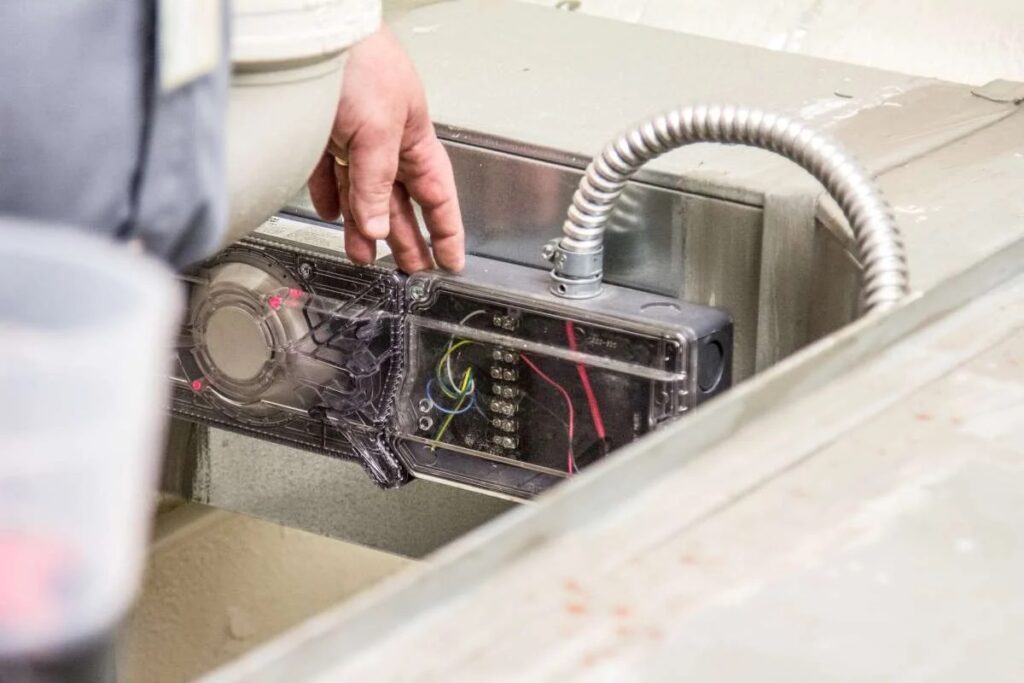Smoke detectors are critical components in every home security system. They not only alert inhabitants of potential fire hazards but also save lives and protect property. Ensuring these devices are in top working condition through timely smoke detector repair is a key step in preserving the safety of your home.
Best Features of Modern Smoke Detectors:
- Dual Sensor Technology: Modern detectors incorporate both photoelectric and ionization sensors to detect smoldering fires and rapidly growing flames, respectively.
- Interconnectivity: Advanced detectors can link up, meaning if one detector is triggered, all alarms in the house will sound.
- Tamper Resistance: Some units have tamper-resistant features to prevent unauthorized deactivation or removal.
- Long-life Batteries: Several smoke detectors now come with 10-year batteries, reducing the frequency of battery replacements.
- Smart Integration: They can be connected to smart home systems, sending alerts to phones or triggering other smart devices during an alarm.
- Voice Alerts: Some detectors provide voice alarms which can sometimes be more effective, especially for children, than traditional beeping alarms.
- Test Buttons: Enables users to quickly and easily check that the device is working correctly.
- Strobe Lights for the Hearing Impaired: These visual alarms assist those with hearing challenges in recognizing a fire hazard.
- Digital Display: Shows levels of smoke or carbon monoxide, allowing you to understand the severity of the threat.
- Event Memory: Some units have a feature that recalls previously detected threats, which can be beneficial during inspections or smoke detector repair sessions.
Role of Smoke Detectors in Home Security:
While most people recognize smoke detectors for their primary function – alerting inhabitants of potential fire hazards – their integration into broader home security systems is becoming more common. In the event of a fire, modern systems can not only trigger an alarm but also notify emergency services and shut down HVAC systems to prevent the spread of smoke.
How Does a Smoke Detector Work?
There are two primary types of smoke detectors: ionization and photoelectric.
- Ionization detectors contain a small amount of radioactive material that ionizes the air in the detection chamber, leading to a current flow between two electrically charged plates. When smoke enters the chamber, it disrupts this flow, triggering the alarm.
- Photoelectric detectors use a light source and a sensor. When smoke enters its chamber, it scatters the light, causing it to hit the sensor and trigger the alarm.
10 Tips for the Care and Repair of Smoke Detectors:
- Monthly Checks: Press the test button once a month to ensure it’s working.
- Clean Regularly: Dust and debris can cause false alarms. Vacuum around the unit every six months.
- Replace Batteries: Even if they seem fine, replace batteries at least once a year.
- Avoid Painting Over: Painting can clog the sensors, rendering the unit ineffective.
- Know the Lifespan: Replace smoke detectors every 10 years, even if they seem okay.
- Smoke Detector Repair: If a unit gives false alarms frequently or doesn’t respond to tests, consider smoke detector repair.
- Avoid Installation Near Vents: This can lead to false alarms or missed detections.
- Interlinked Systems: Ensure that all interconnected alarms sound when one is triggered.
- Keep a Repair Kit: Having a small smoke detector repair kit with spare batteries, a soft brush, and a backup unit can be useful.
- Professional Checks: Occasionally, have professionals inspect and conduct any necessary smoke detector repair.
Solutions to Common Issues:
- Frequent False Alarms: This could be due to dust or it being too close to cooking appliances. Clean the detector or relocate it.
- No Sound During Tests: Batteries might be dead, or the unit might require smoke detector repair or replacement.
- Continuous Beeping: Usually indicates a low battery.
Step-by-Step Guide for Smoke Detector Repair:
Safety First:
- Turn off electricity to the smoke detector at the main circuit breaker to avoid any electrical hazards.
- Inform everyone in the house that you will be working on the smoke detector to prevent any unexpected tests or alarms.
Inspect the Smoke Detector:
- Remove the detector from its mounting bracket by twisting it counterclockwise or according to the manufacturer’s guidelines.
- Check the back of the device for a date of manufacture. If it’s over 10 years old, replacement is advised over repair.
Open the Detector:
- Many smoke detectors have snap-on covers. Gently pry the cover open using a flat head screwdriver. Some models may have screws that need to be removed.
Clean the Interior:
- Using a soft brush or compressed air, gently clean the interior of the smoke detector, ensuring that any dust or debris is removed from the sensors. This is a common cause of malfunctions.
Check the Battery:
- If the smoke detector is battery-operated or has a battery backup, remove the battery and replace it with a new one. Corroded battery contacts can also be gently cleaned with fine-grit sandpaper or an eraser.
Inspect for Visible Damage:
- Look for any signs of damage, such as burnt areas or broken components. Damage to the circuit board usually means the detector should be replaced.
Reassemble and Test:
- Once the interior is cleaned and the battery is replaced, snap the cover back into place or screw it back on. Reattach the smoke detector to its mounting bracket.
- Restore power to the unit and press the test button. If it beeps or sounds an alarm, the repair was successful.
Consider Replacement:
- If, after cleaning and battery replacement, the smoke detector still doesn’t work, it’s advisable to replace the entire unit.
- Even after successful smoke detector repair, it’s essential to test the unit monthly to ensure functionality.
Document the Repair:
- Keep a log of the date, the issues noted, and the repairs done. This can be useful for future reference and maintenance schedules.
Dispose of Old Units Responsibly:
If replacing, ensure that the old unit is disposed of as per local regulations. Some components, especially in ionization detectors, may be considered hazardous waste.
While smoke detector repair can sometimes be a simple process, it’s always essential to be aware of the unit’s age and any indications that it might be time for a replacement. Always prioritize safety and consult the manufacturer’s guidelines or a professional if in doubt.
The importance of smoke detectors in home security cannot be overemphasized. They are a vital frontline defense against potential fire hazards. Regular maintenance and timely smoke detector repair ensure that they function effectively, safeguarding our homes and loved ones.


